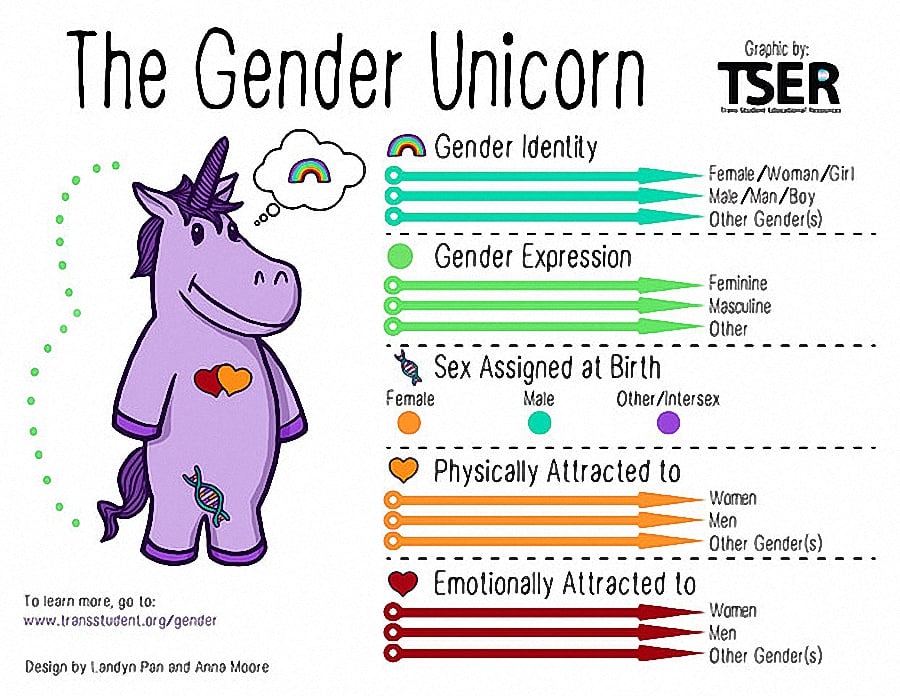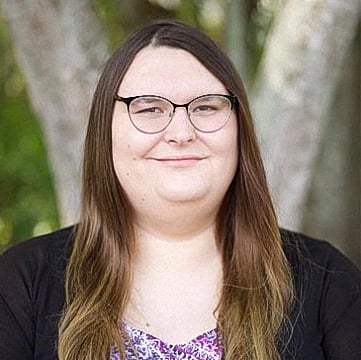
Editor’s Note: We’re excited to bring you this first in a new series of blogs by Music Educator, Researcher, Author, and Choral Director Melanie Stapleton on the important topic of gender inclusivity in the choral world. Our goal is to inform, educate, and provide guidance for the choral community, to help make your chorus a safe and welcoming home for all. Among the future articles we’ll publish will be thoughtful and practical advice on what to do when singers approach you as trans or non-binary; uniforms, standing arrangements, and rooming during trips; and the effects of hormone replacement therapy on the voice. Please share your thoughts and experiences in our Comments section below. Thank you! Michael Hughes - CMO/Chorus Connection
I’ve been in choir as long as I can remember. As an adolescent, I remember struggling to understand some of the “basics” of music. This new language, while intrinsically beautiful, was complex and something my prepubescent mind didn’t quite fully understand. Why did we have a word like diminuendo when decrescendo existed? What the heck was a D.S. al Coda? These are questions I still remember asking my choir director when the synapses weren’t quite firing. I didn’t understand the nuances of the language.
As I grew into my musicianship and into the role of a “choir kid”, and ultimately a choir director in my own right, I found myself becoming more aware of my transgender identity. This led to points of friction in my choral experience. My directors were unaware of how to work with transgender singers. They didn’t understand how inadvertently hurtful they could be with their language or with their failure to empathize with my struggle. No matter how much they loved and supported me, my safe choral home was always tinged with vocabularic thorns. Even in the midst of a productive rehearsal, singing some truly soul-stirring music, one errant word or phrase could prick me, causing me to wince, indirectly telling me that maybe the choral rehearsal could never truly be a place where I was fully accepted.
I decided that that wasn’t acceptable to me. There were too many other singers like me out there that didn’t deserve to feel this way. Too many newcomers to the choral world deserved a home that was more rose and fewer thorns. Part of my life’s work became educating and helping cisgender choir directors understand some of these nuances in the LGBTQ+ language, in a non-judgmental way, so that they could learn and provide the best atmosphere for their trans, non-binary, and gender-expansive singers.
To start, I want to remind you that it is okay if you don’t know something. There may be some ideas here that challenge you or your preconceived notions. There might be some discomfort as you learn and grow. As we tell our singers when they sing Whitacre or Lauridsen, lean into the dissonance. Our focus in this article will be understanding some of the nuances of language in the transgender community, so I am going to assume a level of prior knowledge in overarching LGBTQ+ matters. However, if you find yourself in need of a vocabulary guide, please use this list from PFLAG. It’s quite comprehensive and can help provide context as needed. And if you find your brain getting mushy from all the new information, it’s okay to take a break, pet a puppy, and then come back.
The first thing we need to understand is the difference between gender, sex, gender identity, sexual orientation, and gender expression. These are often conflated with one another and sometimes used interchangeably when they really shouldn’t be. Sex, or more specifically, one’s Assigned Sex at Birth (commonly abbreviated ASAB) is the biological sex that is assigned to somebody based on external biological features. Gender is societal, it’s different roles or behaviors that society deems “appropriate” for a certain sex. Gender identity is one’s internal sense of what gender they are. This is where somebody feels “I am a man, or I am a woman, or I am neither a man nor woman, etc.” Gender expression is how somebody expresses their internal sense of gender, usually through their behavior, speech, clothing, accessories, posture, etc. For example, somebody whose gender might be more feminine might wear a skirt or earrings, items traditionally heralded by society as feminine.” In contrast, somebody more masculine might wear something considered more “masculine”. Sexual Orientation is simply who somebody is attracted to and is not related to one’s gender identity.
To recap in a simpler way, ASAB is what sex you were assigned at birth, gender is what roles/behavior society expects based on your ASAB, your gender identity is who you are, your gender expression is how you show who you are to the world, and your sexual orientation is who you like/love.
If you are somebody who likes to see some visual representations of the above, here is the lovely “Gender Unicorn” graphic from TSER (Trans Student Educational Resources.)

Now that you’ve got a good grasp on those definitions, let’s take a look at some of the “meat and potatoes” of the vocab. You may have noticed that I used the word “cisgender” earlier. If you panicked a bit and preemptively Googled it, you’re already ahead of the game. You might have skimmed over it or entirely missed it—I’m not offended either way.
Cisgender, with the Latin prefix “cis” meaning “same”, simply means that somebody’s assigned sex at birth (ASAB) is the same as their gender identity. This is what the large majority of people identify as. Conversely, transgender, with the Latin prefix “trans” meaning “across”, is an umbrella term for somebody whose ASAB and gender identity are in some way different. Some trans people choose to transition, altering their body medically via hormones or surgeries, so that their body accurately reflects their gender identity. Other trans people do not, whether because they simply don’t want to, or because they cannot for myriad reasons. A transition is not a requirement to identify as trans or transgender. Not every person identifies under the transgender umbrella, some people find that other terms match their identities better, and that’s okay!
Non-Binary people, commonly abbreviated Enby, are individuals who do not identify as either male or female. These individuals tend to use pronouns like they/them instead of he/him or she/her. Their gender expression might be considered more societally androgynous, or they might have some combination of traditionally “masculine” and “feminine” clothing. Some Enby people may do some kind of physical transition or alter their bodies in some way, and many others will not. Some may identify under the transgender umbrella, and others may not. It varies from person to person.
As mentioned earlier, language as a whole has many nuances, this is especially true when it comes to language around gender. Another term that has emerged into the zeitgeist is gender-expansive. Gender-expansive, like transgender, functions as an umbrella term. However, gender-expansive more adequately envelops the identities of those who do not feel covered by the transgender umbrella. This term has very quickly risen to prominence, especially in academic settings.
If your brain doesn’t feel like mush yet, I’m surprised. Before we get into some final terminology, here’s a picture of my puppy, Queso, from earlier this year to give you a nice brain break. That is his moose, Melvin, who has since lost an eye and survived countless tug of war sessions.

Okay, brain break over. The next few words that we are going to be going over are some of the most important for you to understand so as not to inadvertently trigger your trans singers.
The most important of these words, in my opinion, is the term gender dysphoria. Gender dysphoria is the distress that is caused by the incongruence of somebody’s ASAB and gender identity. Gender dysphoria can range from very minor frustration to something as severe as suicidal thoughts and attempts.
Triggers of gender dysphoria can include the following:
- Misgendering someone or using incorrect pronouns
- Deadnaming
- Bodily features that might not match their gender identity (ex: facial hair on a transwoman, or the appearance of breast tissue on a transman)
- Gendered expectations based on one’s assigned sex at birth. (ex: “Men should help move the chairs.”)
- Bathrooms, locker rooms, or other spaces that are typically segregated by sex.
- Speech that separates or divides an ensemble by sex. (ex: “Girls go over here; boys go over here.”)
Not all transgender or non-binary individuals experience gender dysphoria, but the vast majority do to some extent.
Misgendering somebody is one of the most prevalent triggers of gender dysphoria. Misgendering is referring to somebody as a gender that they do not identify with. For example, if during a rehearsal, a director was talking about his singer, Ashley, who uses feminine (she/her) pronouns, and calls Ashley “he” or “him”. If Ashley were cisgender, she might shrug it off as a common mistake, though it may make her feel as if something about her causes others to view her as more masculine. For trans people, this is especially true, and to a greater extent. If Ashley were trans, gender dysphoria might start to kick in. She might start to wonder if everybody around her sees her as female, or begin to doubt that the people she trusts most in her life internally don’t view her as the gender she is. This could spin off into other negative thoughts or considerations. Not only does this negatively affect Ashley, but it causes her to disassociate from the rehearsal and alienates her from the choir.
The same could be said if the director used Ashley’s deadname. Deadnaming is when somebody knows the name that was given to a trans person at birth and uses that name instead of the chosen name of the singer. Using a trans person’s deadname is thoughtless and hurtful, and may cause that person to leave an ensemble.
It can be really difficult to keep up with the language of the LGBTQ+ community. I liken it to the ever-changing world of technology, or social media. As our understanding of our identities grows, so too does the language that we use to describe them. And while some may complain that it is too complex, I am most heartened by readers like you, who take the time to educate yourselves and understand the nuances of LGBTQ+ language and terminology. By doing so you are creating a better atmosphere for your singers, one that is more welcoming and safe. You are making your choral ensemble a place where all can truly feel at home.

Melanie Stapleton (she/her) is a music educator, researcher, author, and choral director located in Chicago. She is currently a PhD student at Northwestern University in Evanston, Illinois, pursuing a PhD in Music Studies with a specialization in Music Education and an interdisciplinary certificate in Gender and Sexuality Studies. She is the founder of Blurring the Binary, and holds a Masters of Music Education from the University of North Texas as well as a Bachelors of Music Education from Louisiana State University. She is a strong believer that the choral ensemble should be a musical family and a safe place offering unconditional love for all. When not teaching, she can be found hanging with her Golden Retriever, Queso, playing video games, or jamming to the latest choral hits.

.png?width=1400&name=All%20BLOG%20Calls%20to%20Action%20(1).png)